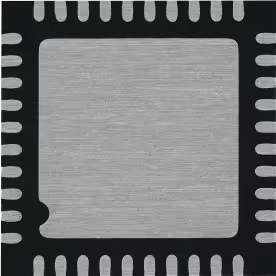
Dragonfly
Delivering the world’s first reconfigurable chip.
Made possible by our patented Dragonfly DigitalRF technology, Qualinx is the first to offer on-the-fly, on-demand, dynamic reconfigurability.

Enabling GNSS and IoT Positioning, Navigation & Tracking Applications
Modern day GNSS and IoT applications require ultra-low-power performance to ensure prolonged autonomous connectivity.
Wearables
Refresh rate: Every 8h




Moore’s law
Extending Moore’s Law with
Moore’s Law has long driven progress in computing — doubling chip performance every two years. But analog bottlenecks have slowed that momentum.
Qualinx's Dragonfly reactivates this growth by shifting analog signal processing into the digital domain.
How Qualinx's Dragonfly extends Moore’s Law
By converting signals to digital right at the front-end, Dragonfly reduces dependence on bulky analog components that don’t scale well.
Dragonfly simplifies the signal chain, making it possible to integrate more functions into a single chip — smaller, faster, more efficient.
Unlike analog, digital circuits benefit directly from advances in semiconductor manufacturing, staying on Moore’s curve.
Digital components behave consistently across manufacturing batches, eliminating costly analog calibration steps.
Advanced digital processing allows smarter, real-time signal handling that analog circuits simply can’t match.
It’s time to use time
Dragonfly scales with Moore’s law and replaces 80% of the analog content of any receiver
- Digital scales well
- Dragonfly scales well
- Digital scales well
- Analog does not scale
A transformative single-chip solution for tracking and positioning
The smallest, most power optimized and fully reconfigurable chip
Functionality can be updated or reconfigured via software. This makes one receiver suitable for many different wireless standards using the same chip.
Digital processing ensures cleaner, more precise signals with better filtering and timing — crucial for GNSS accuracy.
Advanced DSP techniques allow real-time filtering and suppression of noise and jamming in challenging RF environments.
Digital circuits behave consistently across chips, minimizing variation and calibration compared to analog components.
Power so low, QLX3xx can run on vegetable batteries



